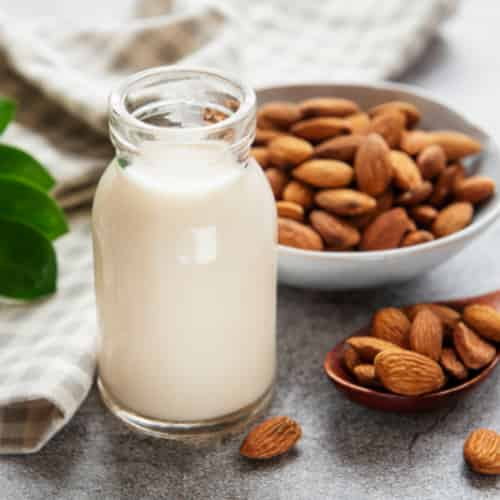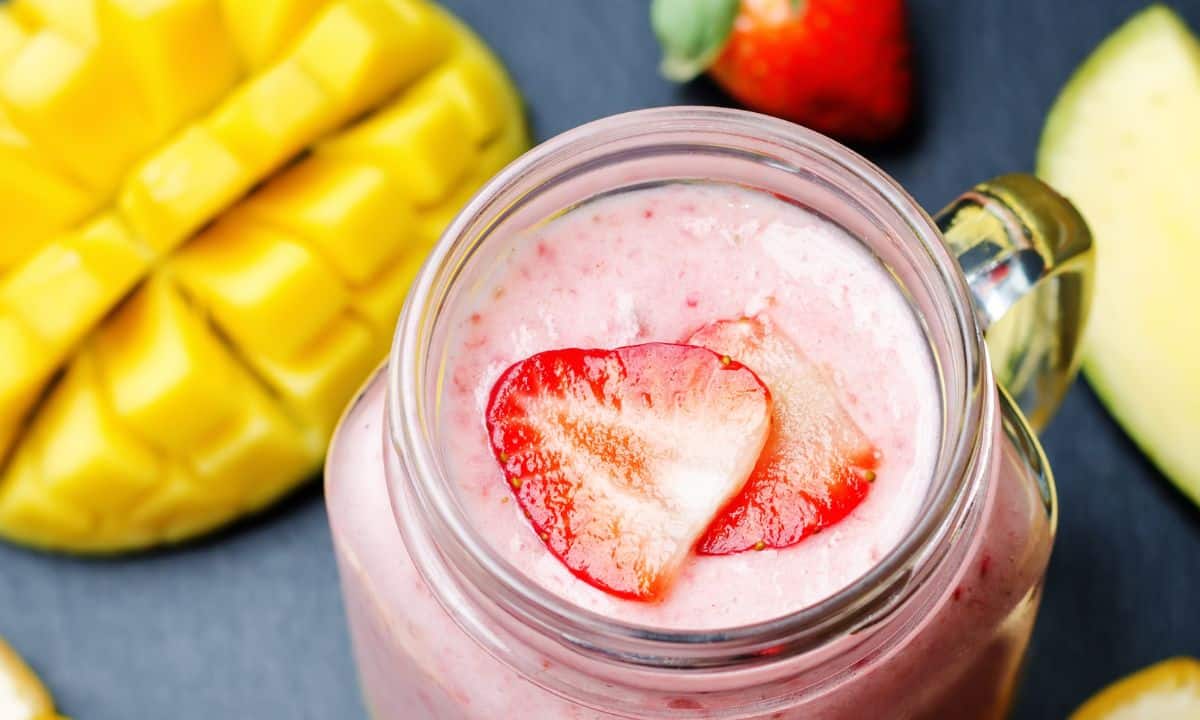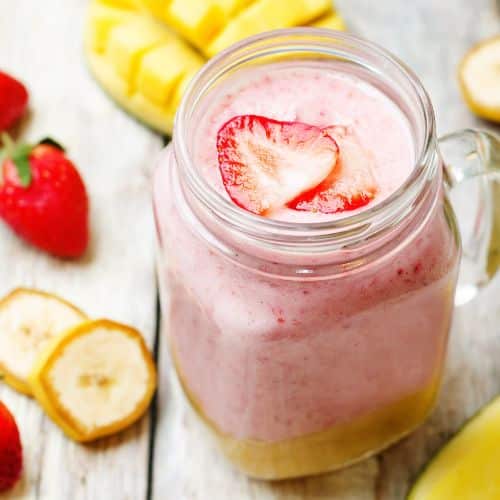Tropical Smoothie for Menopause
Menopause is an inevitable stage for women that can come with various uncomfortable physical and emotional symptoms.
Table of Contents
ToggleWhile many treatments are available to help manage these symptoms, one natural remedy may be found in the kitchen. Smoothies are delicious snacks that provide essential vitamins and minerals to support overall health during this time of transition.
Not only do these tasty drinks have potential benefits for menopausal relief, but they also pack a powerful nutritional punch that will keep your body well-nourished throughout the process.
Read on to learn more about the benefits of avocado smoothies for menopause relief!
Ingredients
Strawberries

The hormonal changes during menopause may cause the body to become resistant to insulin, potentially resulting in high blood sugar and lead to an increased severity or frequency of hot flashes.
Insulin resistance also plays a role in weight gain.
Evidence has shown that the polyphenols in strawberries contain reduced insulin response, improving overall health.
Furthermore, the powerful antioxidants in strawberries also reduce inflammation, which can help reduce the risk of cancer, Alzheimer’s, and heart disease.
Last, hormonal changes during menopause may cause some women joint pain. The polyphenols in strawberries have been shown to help reduce pain caused by inflammation.
Mangoes
Let’s add some sweetness to this smoothie with the wonderful mango.
Mangoes relieve constipation, a common concern among menopausal women.
Eating mangoes can also improve your skin’s look and texture. Vitamin C-rich foods like mangoes promote collagen synthesis.

Last, mangoes are nutrient-dense and packed with many other immune-boosting vitamins like vitamins A, E, copper, and folate.
Avocados
Although it might seem odd to add avocados to smoothies, you will discover that they add creaminess and a pleasant flavor.
Avocados are a great, delicious source of monounsaturated fat that helps increase meal satiety.
This could help those looking to lose weight as they’re more filling and help curb undesirable cravings.

A recent study showed that adults who ate one Hass avocado and a low-calorie diet daily for twelve weeks accomplished significant weight loss.
Moreover, the fiber found in avocados has also been shown to improve the gut microbiome, which can help with menopause symptoms.
Last, avocados are anti-inflammatory, which further helps improve overall health.
Almond Milk

Unsweetened almond milk is a low-fat, low-calorie milk alternative. Almonds provide magnesium, a mineral that provides sleep and depression aid for women in menopause.
Being deficient in magnesium can cause unpleasant symptoms like weakness and muscle cramping.
When purchasing almond milk, be mindful of the nutrition label as some will have added sugars.
Choose an unsweetened plain or vanilla variety as they contain 0-2g of sugar per 8-oz cup.
FAQ
Can I use smoothies as meal replacements?
Yes, you can use smoothies as meal replacements. Smoothies are a great way to get in all the fruits and vegetables you need quickly and easily. They also provide lots of fiber and other essential vitamins and minerals that our bodies need to stay healthy.
However, it is a good practice to add a source of protein, such as protein powder, chia seeds, or Greek yogurt.
How can I make my smoothie more filling?
There are many ways to make your smoothing more filling.
First, you can add protein powder, Greek yogurt, or chia seeds to your smoothie for an extra protein boost. Both will help keep you full for longer.
Other ingredients like fiber-rich berries, nuts, and nut butter can make your smoothie more filling.
Add some oats to your smoothie for extra fiber and carbohydrates to increase the satiety.
Can I use fresh fruits instead?
You can opt out of frozen strawberries and/or mangoes for fresh fruits. However, add some ice cubes to maintain the thick, cold smoothie consistency.
Do I need to buy organic avocadoes?
No, avocados have been classified as part of the “clean fifteen,” meaning they have scored low in pesticides.
Can the almond milk be substituted?
Yes! Feel free to use any type of milk you prefer. You can also use tap/spring water or coconut water. The avocado creates a creamy consistency that makes it easy to skip using milk.
Menopause Smoothie Recipe
Tropical Smoothie for Menopause
Equipment
- High-speed blender
- Knife and cutting board
Ingredients
- 1 cup unsweetened vanilla almond milk
- 1/3 each avocado Hass
- 5 each strawberries frozen
- 1/2 cup mango frozen
- 20 grams protein powder
Instructions
- Pour almond milk into the blender
- Add avocado, strawberries, mango, and protein powder
- Blend until smooth
Notes
Nutrition
The Bottom Line
Making a smoothie is an easy and delicious way to add more nutrition to your diet, which can make menopause symptoms easier to manage.
Don’t forget to play around with different fruits, protein powders, nuts, nut butter, and other ingredients according to your taste!
This breakfast smoothie could be just the thing you need to stay energized throughout the morning. Give it a try today!
This blog post was written by soon-to-be registered dietitian Ruby Rodriguez and edited by Dr. Su-Nui Escobar, DCN, RDN, FAND.

Dr. Su-Nui Escobar, a Registered Dietitian/Nutritionist in Miami, FL, is dedicated to empowering women in perimenopause and menopause to live healthier, more satisfying lives.
With a doctorate in clinical nutrition from the University of North Florida, she has expertise in menopause and weight loss, including the unique challenges faced by those on weight loss medications.
Su-Nui’s passion for her field is evident in her previous role as the Academy of Nutrition and Dietetics spokesperson.



